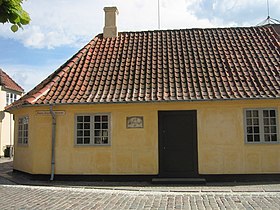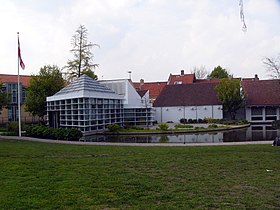
Hans Christian Andersen was a Danish author. Although a prolific writer of plays, travelogues, novels, and poems, he is best remembered for his literary fairy tales.

Odense is the third largest city in Denmark and the largest city on the island of Funen. As of 1 January 2023, the city proper had a population of 182,387 while Odense Municipality had a population of 207,762, making it the fourth largest municipality in Denmark. Eurostat and OECD have used a definition for the Metropolitan area of Odense, which includes all municipalities in the Province of Funen, with a total population of 504,066 as of 1 July 2022
Museum Odense is a self-governing museum institution in Odense, Denmark.
Hans Christian Andersen (1805–1875) was a Danish author and poet.
Kurushima Takehiko was a children's literature author known as "the Japanese Hans Christian Andersen". He was one of the three great Japanese authors of children's stories for public performance. One of Takehiko's most celebrated works is the nursery rhyme "Yūyake Koyake".
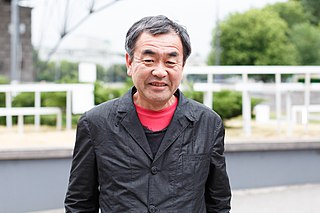
Kengo Kuma is a Japanese architect and emeritus professor in the Department of Architecture at the University of Tokyo. Frequently compared to contemporaries Shigeru Ban and Kazuyo Sejima, Kuma is also noted for his prolific writings. He is the designer of the Japan National Stadium in Tokyo, which was built for the 2020 Summer Olympics. He is married to architect Satoko Shinohara, and they have one son, Taichi, also an architect. He is an advisor for Kitakyushu-city in Japan.
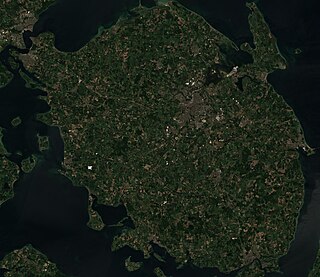
Funen, with an area of 3,099.7 square kilometres (1,196.8 sq mi), is the third-largest island of Denmark, after Zealand and Vendsyssel-Thy. It is the 165th-largest island in the world. It is located in the central part of the country and has a population of 469,947 as of 2020. Funen's main city is Odense, which is connected to the sea by a seldom-used canal. The city's shipyard, Odense Steel Shipyard, has been relocated outside Odense proper.
The H.C. Andersen Marathon is a marathon in Odense, Denmark, which was established in 2000. From 2006 onwards, the event has included a half marathon and from 2017 a 10K race "Run the last 10".
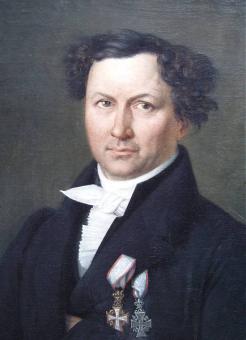
Jørgen Hansen Koch was a Neoclassical Danish architect. He was chief of the national Danish building administration from 1835 and director of the Royal Danish Academy of Fine Arts from 1844 to 1849.
The Hans Christian Andersen Literature Award is a Danish literary award established in 2010. It is awarded every other year to a living author whose work resembles that of Hans Christian Andersen. It is one of the biggest literary prizes in the world with the winner receiving DKr 500,000. The winner receives a bronze sculpture "The Ugly Duckling" by sculptor Stine Ring Hansen.
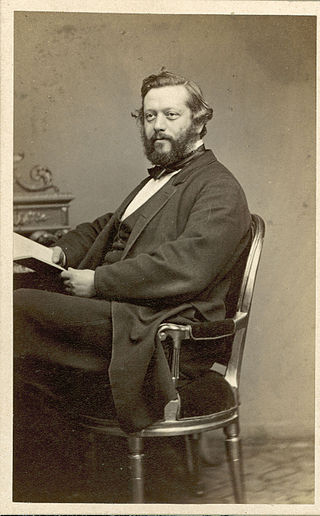
Israel Berendt Melchior was a Danish engineer, manufacturer and amateur photographer. He is remembered in particular for the photographs he took of Hans Christian Andersen.

Rolighed was a country house in what is now the Østerbro district of Copenhagen. As a regular guest of the Melchior family, Hans Christian Andersen died there in August 1875.
"The Tallow Candle" is a 700-word literary fairytale by Danish writer Hans Christian Andersen (1805–1875).

Odense Palace in the city of Odense on the Danish island of Funen has its origins in a 15th-century monastery which passed to the Crown after the Reformation, and since then has served as an administrative building: in turn as a seigneurial residence, an amt administrator's residence, a governor's residence, and a municipal government building. The main white Baroque building with 13 bays was designed by J.C. Krieger and completed in 1723.

Odense City Hall houses the administrative offices of Odense Municipality in the city of Odense on the Danish island of Funen.
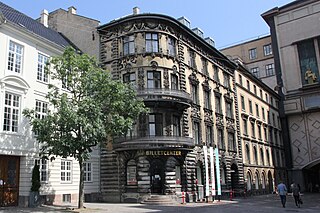
Brønnum House is a richly decorated 1860s apartment building situated adjacent to the Toyal Danish Theatre's Stærekassen extension and the Harsdorff House on Kongens Nytorv in central Copenhagen, Denmark. It was constructed as one of the first new buildings when the former Gammelholm naval dockyards was transformed into a new residential neighborhood. Café Brønnum, frequented by actors from the adjacent theatre, was based in the building for more than 100 years. The homes of the wealthy Jewish businessman Martin Henriques and Bernhard Hirschsrpung on the first and second floor were both frequented by some of the leading cultural figures of their time. The building was listed in the Danish registry of protected buildings and places in 1995. The building is now owned by Karberghus. It houses a high-end cocktail bar on the ground floor and serviced offices on the upper floors.

Nyhavn 20, also known as the Boel House, is a listed property overlooking the Nyhavn canal in central Copenhagen, Denmark. A plaque on the facade commemorates that Hans Christian Andersen lived in the building when he had his first fairytale published.
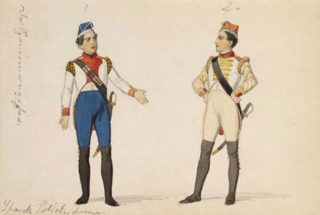
When the Spaniards Were Here is a romantic, comic play by Hans Christian Andersen. It premiered on the Royal Danish Theatre in Copenhagen on 6 April 1865, just a few days after the celebration of Andersen's 60th birthday.

Event Communications, or Event, is one of Europe's longest-established and largest museum and visitor attraction design firms; it is headquartered in London.
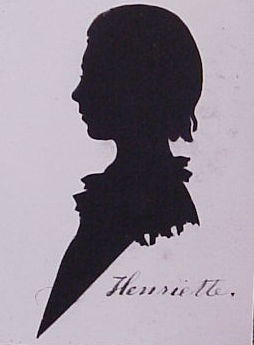
Marie Kirstine Henriette Hanck (1807–1846) was a Danish poet and novelist from Odense. She is remembered in particular for her correspondence with her childhood friend Hans Christian Andersen. After writing poetry in the early 1830s, she wrote two romantic novels: Tante Anna, published anonymously in 1838, followed by En Skribentindes Datter in 1842. She provided considerable moral support to Andersen in the 1830s, as can be seen from the letters he wrote to her.


